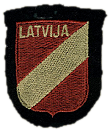Propaganda and prejudiceAccusations in search of evidence
Alan A. Ryan, Jr.'s insistence that U.S. proceedings against Latvians et al. did not originate in Soviet agitprop can only be a lie or a delusion as it is incontrovertibly false. The government's own post-trial brief parroted Nazi "Germanless Holocaust" and Soviet show trial propaganda nearly verbatim and even lied about German reports to contend Latvians couldn't wait for the Germans to arrive to slaughter Jews.
Ryan himself says virtually nothing about Hāzners's case in Quiet Neighbors except in the larger context of botched cases—with absolutely no acknowledgement that Hazners' and other cases failed because they were launched in response to propaganda, not evidence:
Vilis Hazners, of Whitehall, New York, also charged with being a Latvian executioner, went to trial over a two-year period from 1977 to 1979. INS attorneys could not find the photographs which had been shown to the witnesses prior to the trial and were forced to substitute what they contended were "reproductions" to a skeptical judge. A document crucial to the INS's case was never put in the record.1 The judge found the evidence that was introduced to be insufficient, and Hazners went free.
The subsequent judicial review of the proceedings confirms that which photographs were shown, or not, in evidence, or not, was not the cause for the case's failure. However, Ryan and many others maintain that a series of miscues doomed the case, that Hāzners's going "free" was an escape from justice, not vindication. The failure of Hāzners's and other cases born of Soviet propaganda prompted investigations of the competence of U.S. authorities' Nazi-hunting apparatus, but never an inspection of the origin of the accusations being pursued.
We have reproduced the INS's post trial brief in full, observing pagination and look and feel2 for scholarly reference. We have highlighted and annotated with background and context. We should note that our page numbering here appears to differ slightly from that in the subsequent judicial review, the copy referenced there may have had an additional two-page cover.
| 1 | From the OSI's motion to appeal, we believe Ryan refers to Hāzners's receipt of the Iron Cross. Every indication is that Ryan fervently believed that alone branded Hāzners a Nazi and a war criminal. |
| 2 | We did not have access to the copy of the map of Latvia included in the original. In its place, we have included additional information on the Rīga Ghetto and mapped its size and location within Rīga. |
